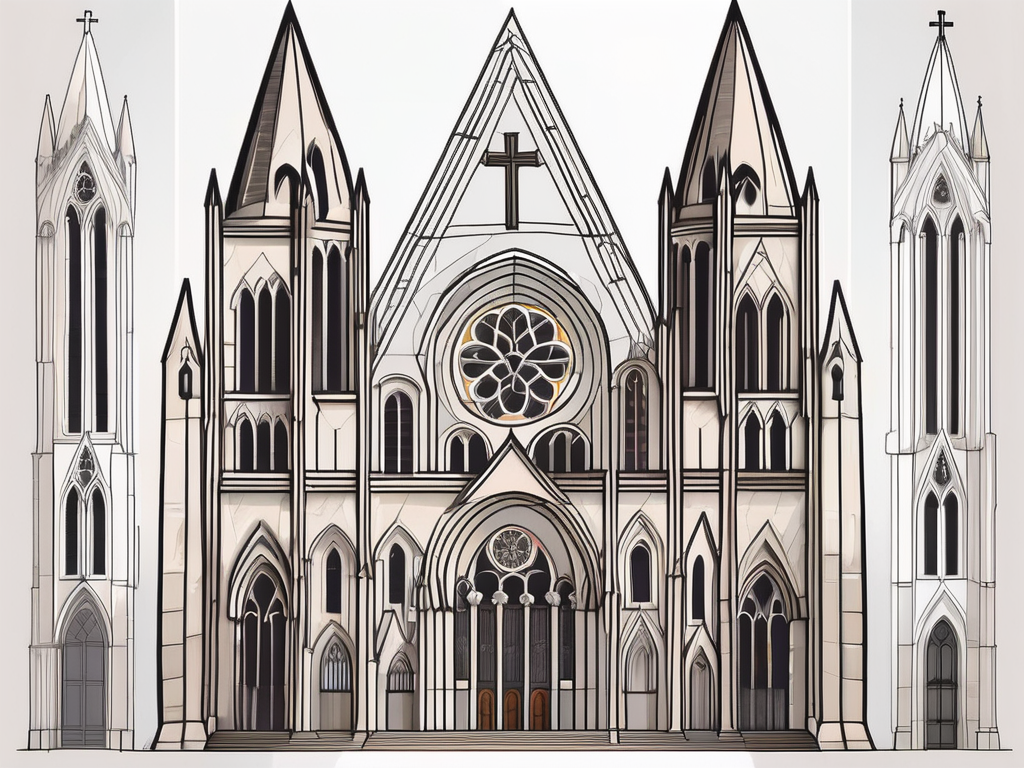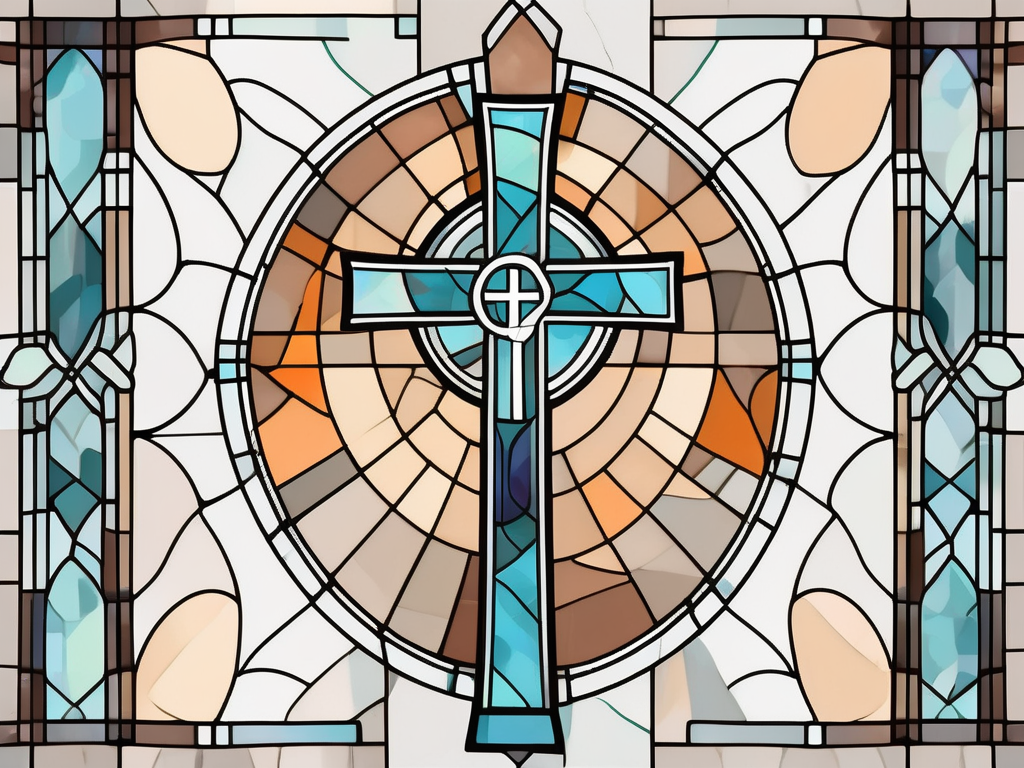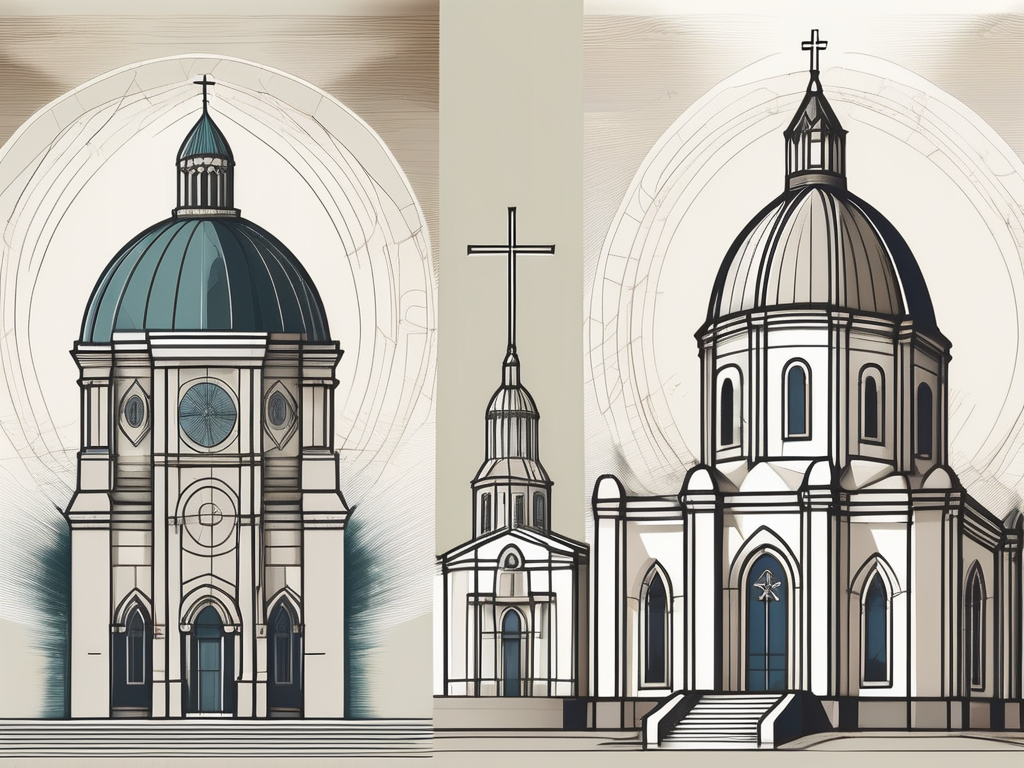If you’ve ever attended a Catholic church service or spoken to a Catholic friend, you might have noticed that their Bible looks slightly different from the one you might have at home. So, what Bible do Catholics use exactly? Let’s dive into the world of Catholicism and explore the fascinating world of the Catholic Bible.
Understanding the Catholic Bible
Before we delve into the specific versions and features of the Catholic Bible, let’s take a closer look at its overall structure. The Catholic Bible consists of two main sections: the Old Testament and the New Testament. However, there is a significant difference in the number of books between the Catholic and Protestant bibles. While Protestant bibles typically contain 66 books, the Catholic Bible includes 73 books.
The Structure of the Catholic Bible
The Catholic Bible is divided into various sections, each with its own unique content and purpose. These sections provide a comprehensive understanding of the religious and historical context of the Catholic faith.
The first section of the Catholic Bible is the Pentateuch, which comprises the first five books of the Bible. These books, also known as the Torah, include Genesis, Exodus, Leviticus, Numbers, and Deuteronomy. The Pentateuch is of immense significance as it contains the foundational stories of creation, the fall of man, the establishment of the covenant with God, and the laws given to the Israelites.
The second section of the Catholic Bible is the Historical Books. These books recount the history of the Israelites, from their entry into the Promised Land to the exile and return from Babylon. They provide valuable insights into the political, social, and religious developments of the ancient Israelite civilization.
The third section of the Catholic Bible is the Wisdom Books. These books include poetic and reflective writings that offer guidance, moral teachings, and philosophical reflections. Some of the well-known Wisdom Books found in the Catholic Bible are Psalms, Proverbs, and Ecclesiastes. These books provide spiritual nourishment and offer solace in times of difficulty.
The fourth section of the Catholic Bible is the Major Prophets. These books contain the prophecies and predictions of major prophets such as Isaiah, Jeremiah, and Ezekiel. These prophets played a crucial role in conveying God’s messages to the people of Israel, including warnings of impending judgment and promises of future redemption.
The fifth section of the Catholic Bible is the Minor Prophets. These books consist of the writings of twelve prophets, including Hosea, Joel, Amos, and Malachi. Although shorter in length compared to the Major Prophets, the Minor Prophets deliver powerful messages of repentance, hope, and restoration.
The final section of the Catholic Bible is the New Testament. This section focuses on the life, teachings, death, and resurrection of Jesus Christ, as well as the early Christian community. It includes the four Gospels (Matthew, Mark, Luke, and John), the Acts of the Apostles, the Epistles (letters) of various apostles, and the Book of Revelation.
Key Features of the Catholic Bible
One unique aspect of the Catholic Bible is the inclusion of the deuterocanonical books, also known as the Apocrypha. These additional books, such as Tobit, Judith, Wisdom, Sirach (Ecclesiasticus), Baruch, and the Maccabees, are not found in the Protestant Bible. They hold great importance in Catholic doctrine, providing additional insights into the religious and historical context of the time.
Another distinctive feature of the Catholic Bible is the presence of footnotes and cross-references. These footnotes provide explanations, historical context, and references to other biblical passages. They are a valuable resource during Bible study, helping Catholics deepen their understanding of the text and connect various parts of the Bible together.
Furthermore, the Catholic Bible is often accompanied by study guides and commentaries that offer further insights into the text. These resources provide historical, cultural, and theological context to enhance the reader’s understanding and appreciation of the scriptures.
In addition to the textual content, the physical presentation of the Catholic Bible can vary. Some editions may include beautiful illustrations, maps, and charts that aid in visualizing the biblical events and settings. These visual elements contribute to a more immersive reading experience and help readers engage with the text on a deeper level.
In conclusion, the Catholic Bible is a rich and comprehensive collection of sacred texts that encompasses various sections, each with its own unique content and purpose. Its inclusion of additional books, footnotes, and cross-references enhances the reader’s understanding and provides a deeper connection to the Catholic faith and its teachings.
The Different Versions of the Catholic Bible
Now that we have a basic understanding of the structure and features of the Catholic Bible, let’s explore some of the different versions commonly used by Catholics.
The New American Bible (NAB)
The New American Bible (NAB) is one of the most widely used Catholic Bible translations in the United States. First published in 1970, the NAB includes modern language that strives to make the biblical text more accessible and understandable to contemporary readers.
With its clear and straightforward language, the NAB has become a favorite among Catholics who seek a Bible that is easy to read and comprehend. It is often used in liturgical celebrations, religious education programs, and personal study.
One of the notable features of the NAB is its extensive footnotes, which provide additional explanations and insights into the biblical text. These footnotes help readers to better understand the historical and cultural context in which the scriptures were written.
The Douay-Rheims Bible
The Douay-Rheims Bible is an English translation of the Latin Vulgate, which was the standard Catholic Bible for centuries. First published in the late 16th century, the Douay-Rheims Bible maintains a more archaic language style compared to modern translations.
Many Catholics appreciate the Douay-Rheims Bible for its rich and poetic language, which adds a sense of reverence and solemnity to the reading of scripture. It is often favored by those who prefer a more traditional and formal approach to biblical texts.
Due to its historical significance, the Douay-Rheims Bible is also valued for its preservation of Catholic tradition and teachings. It serves as a link to the early English translations of the Bible and offers insights into the development of Catholic theology over the centuries.
The Revised Standard Version Catholic Edition (RSVCE)
As the name suggests, the Revised Standard Version Catholic Edition (RSVCE) is an adaptation of the Revised Standard Version (RSV) specifically for the Catholic Church. This translation, published in 1965, aims to uphold the accuracy of the biblical text while incorporating Catholic tradition and theology.
The RSVCE is known for its balance between modern language and traditional accuracy. It seeks to provide a faithful rendering of the original biblical texts while making them more accessible to contemporary readers. This version is often used for personal study and scholarly research.
One of the unique features of the RSVCE is its inclusion of the Deuterocanonical books, also known as the “Apocrypha,” which are not found in Protestant Bibles. These additional books, such as Tobit, Judith, Wisdom, Sirach, Baruch, and others, are considered canonical by the Catholic Church and provide valuable insights into Jewish history and religious practices.
Overall, the RSVCE is highly regarded for its scholarly approach and its commitment to both accuracy and Catholic tradition. It is a comprehensive resource for Catholics seeking a Bible that combines modern language with a deep respect for the historical and theological richness of the Catholic faith.
The Role of the Bible in Catholic Worship
The Catholic Church places great emphasis on the role of the Bible in its worship practices. The Bible serves as a guiding light, providing spiritual nourishment and inspiration to the faithful.
Within the Catholic Mass, the Bible plays a central role in the liturgy. It is during this sacred gathering that several scripture readings are incorporated, allowing the congregation to reflect on God’s word and find solace in its teachings. These readings are carefully chosen and are meant to inspire and guide the faithful in their spiritual journey.
The Bible in the Mass
During a Catholic Mass, the atmosphere becomes infused with a sense of reverence and devotion as the Word of God is proclaimed. The readings typically include passages from the Old Testament, Psalms, New Testament, and the Gospel. Each reading is carefully selected to convey a specific message or theme, reinforcing the teachings of the Church and providing spiritual nourishment to the congregation.
As the priest or deacon proclaims the Word, the congregation listens attentively, their hearts and minds open to receive the divine message. The scripture readings serve as a reminder of God’s presence in their lives and offer guidance on how to live a life in accordance with His teachings.
After each reading, a moment of reflection follows, allowing the congregation to internalize the message and apply it to their own lives. This reflection time is an opportunity for personal growth and spiritual transformation, as individuals contemplate the meaning and relevance of the scripture in their own unique circumstances.
Personal Bible Study in Catholicism
While the Catholic Church encourages personal Bible study, it also emphasizes the importance of interpretation within the context of the Church’s teachings. Many Catholics engage in personal study and reflection on the Bible, seeking to deepen their faith and understanding.
Personal Bible study allows individuals to delve deeper into the rich tapestry of the scriptures, exploring the historical and cultural context in which they were written. It provides an opportunity to uncover hidden gems of wisdom and gain a more profound understanding of God’s plan for humanity.
However, within the Catholic tradition, personal Bible study is not seen as an isolated endeavor. It is always accompanied by a respect for the Church’s authoritative interpretation and teachings. This ensures that the faithful remain rooted in the rich tradition and teachings of the Church, avoiding the pitfalls of individual interpretation that may lead to misunderstandings or distortions of the faith.
Through personal Bible study, Catholics seek to deepen their relationship with God, finding solace, guidance, and inspiration in the sacred text. It is a journey of discovery, where the faithful encounter the living Word of God and allow it to transform their lives.
In conclusion, the Bible holds a central place in Catholic worship. It is through the scripture readings in the Mass and personal Bible study that the faithful encounter the divine message, finding spiritual nourishment, guidance, and inspiration for their journey of faith.
Comparing the Catholic Bible to Other Christian Bibles
When it comes to exploring the differences between the Catholic Bible and other Christian Bibles, such as those used by Protestants, there are several intriguing aspects to consider.
Let’s begin by examining the differences in the Old Testament. One of the significant distinctions lies in the inclusion of the deuterocanonical books in the Catholic Bible. These books, also known as the “Apocrypha,” are absent in most Protestant Bibles. The deuterocanonical books, including Tobit, Judith, Wisdom, Sirach, Baruch, and First and Second Maccabees, play a crucial role in the Catholic faith. They provide additional insights into religious beliefs and practices, offering a broader perspective on the historical and theological development of Christianity.
Each of these deuterocanonical books offers unique narratives and teachings that contribute to the richness of Catholic theology. For example, the Book of Tobit tells the story of Tobit and his son Tobias, highlighting themes of faith, devotion, and the role of angels in human affairs. The Book of Judith recounts the courageous acts of a widow who saves her people from an oppressive enemy, demonstrating the power of God’s deliverance. These books, along with the others in the deuterocanonical collection, offer a diverse range of wisdom and inspiration to Catholic readers.
Turning our attention to the New Testament, we find a different landscape. In contrast to the structural differences in the Old Testament, the New Testament of the Catholic Bible is generally the same as that of other Christian traditions. The books and teachings of Jesus Christ, including the four Gospels, the Acts of the Apostles, the Epistles, and the Book of Revelation, are shared among believers, fostering unity in their faith.
The New Testament serves as a cornerstone of Christian belief, emphasizing the life, teachings, death, and resurrection of Jesus Christ. It is a testament to the transformative power of God’s love and the promise of salvation for all who believe. The shared foundation of the New Testament allows Christians from various denominations to find common ground and engage in meaningful dialogue about their faith.
While the Catholic Bible and other Christian Bibles may differ in the inclusion of certain books, it is important to recognize the shared commitment to the core tenets of Christianity. The Bible, regardless of its specific composition, remains a source of spiritual guidance, moral instruction, and inspiration for millions of believers worldwide.
The Importance of the Apocrypha in the Catholic Bible
Now, let’s take a closer look at the Apocrypha and its role in the Catholic Bible.
What is the Apocrypha?
The Apocrypha refers to a collection of religious texts that are not considered canonical by all Christian denominations. However, these books hold great significance within the Catholic Church and provide additional insights into the beliefs and practices of early Christianity.
The Role of the Apocrypha in Catholic Doctrine
In Catholic doctrine, the Apocrypha holds an authoritative status. It has played a significant role in shaping Catholic teachings and practices, particularly in areas such as prayer, spirituality, and moral guidance.
In conclusion, the Catholic Bible is a unique collection of sacred texts that holds deep meaning for millions of Catholics worldwide. With its rich history, diverse versions, and distinctive features, the Catholic Bible continues to guide and inspire believers in their faith journey.












